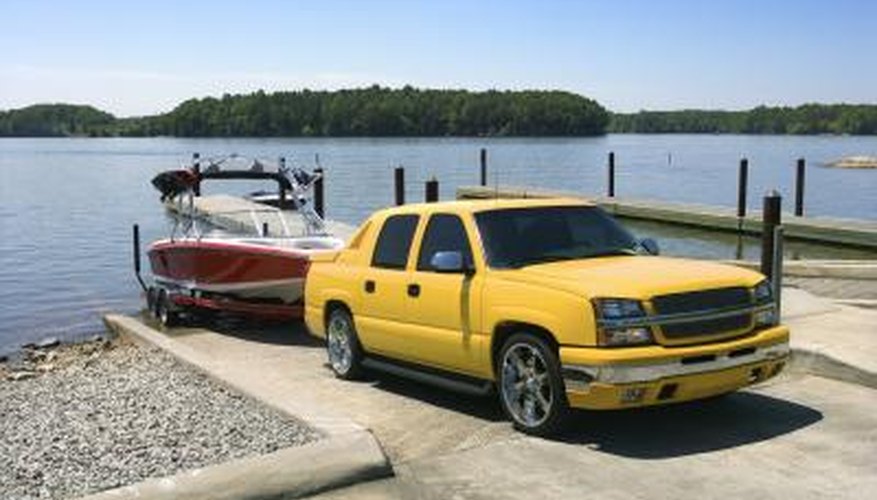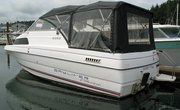
Installing a fuse box on your boat will help you manage your electrical system, protect your wiring and increase the safety of your vessel. You should install your fuse box in a manner that meets marine standards. While the job is straightforward, pay attention to the information in the Tips section.
Items you will need
Quality fuse box with positive and negative busbar
Wire: red and black primary cables; smaller wire for the individual circuits
Wire terminals
Basic tools: screw drivers, wrenches, wire stripper
Special tools: ratcheting-type hand crimper; hammer crimper or nicopress swage-it
Step 1
Locate the fuse box so that it is protected from the elements and within easy reach of the operator.
Step 2
Turn the battery switch off.
Step 3
Run a red cable from the battery switch to the fuse box and cut to size. Install wire terminals on each end. Attach one end to the output terminal of the battery switch and the other end to the largest terminal on the fuse box's positive busbar.
Step 4
Run a black cable from the battery to the fuse box and cut to size. Install wire terminals on each end. Attach one end to the negative terminal on the battery and the other to the largest terminal on the fuse box's negative busbar.
Step 5
Each electrical circuit on your boat should begin and end at the fuse box. For each circuit, install ring terminals on the ends of the wires. Attach the positive wire at the terminal near the appropriate fuse; attach the negative wire to the negative busbar.
Step 6
Install your fuses and turn the battery switch on.
Tips
- Use a high quality fuse box with positive and negative busbars. Unlike in a car, where circuits can be grounded at virtually any point, circuits on a boat should start and end at the fuse box to prevent stray electrical currents.
- Use stranded copper wire (tinned copper is best) with an insulation that can withstand the marine environment. Properly support the wire and protect it from chafe. Use the ABYC wire sizing charts to determine the size of your wire; this is especially important for the cables than run between the battery switch and the fuse box.
- Wire terminals should be crimped; they may be soldered AND crimped. For best results, use a ratcheting-type hand crimper; terminals on thick cables can be crimped using a hammer crimp tool or a nicopress swage-it tool.
- Fuses are meant to protect the boat's wiring. However, by creating separate circuits for each device, you can use fuses of a lower rating that will protect your devices as well. For increased safety, organize your circuits to create a degree of redundancy in your electrical system just in case one circuit fails. For example, divide your cabin lights between two different circuits; if you have two radios, power them on different circuits.
- Critical safety equipment such as bilge pumps should not be wired to a fuse box that can be turned off at the battery switch. They can be wired directly to the batteries on separate circuits that are protected by inline fuses.
References
- ABYC Wire Size Charts, provided by IMTRA
- "Boatowner's Mechanical and Electrical Manual;" Nigel Calder; 1996.
Tips
- Use a high quality fuse box with positive and negative busbars. Unlike in a car, where circuits can be grounded at virtually any point, circuits on a boat should start and end at the fuse box to prevent stray electrical currents.
- Use stranded copper wire (tinned copper is best) with an insulation that can withstand the marine environment. Properly support the wire and protect it from chafe. Use the ABYC wire sizing charts to determine the size of your wire; this is especially important for the cables than run between the battery switch and the fuse box.
- Wire terminals should be crimped; they may be soldered AND crimped. For best results, use a ratcheting-type hand crimper; terminals on thick cables can be crimped using a hammer crimp tool or a nicopress swage-it tool.
- Fuses are meant to protect the boat's wiring. However, by creating separate circuits for each device, you can use fuses of a lower rating that will protect your devices as well. For increased safety, organize your circuits to create a degree of redundancy in your electrical system just in case one circuit fails. For example, divide your cabin lights between two different circuits; if you have two radios, power them on different circuits.
- Critical safety equipment such as bilge pumps should not be wired to a fuse box that can be turned off at the battery switch. They can be wired directly to the batteries on separate circuits that are protected by inline fuses.
Writer Bio
Mick Wolff cruises the South Pacific with his family on a sailboat and has been writing about sailing since 2005. His articles have appeared in "Good Old Boat," "Blue Water Sailing," and "Sail" magazine. He holds a Bachelor of Arts degree from the University of British Columbia and Doctor of Philosophy in history from Cornell University.



